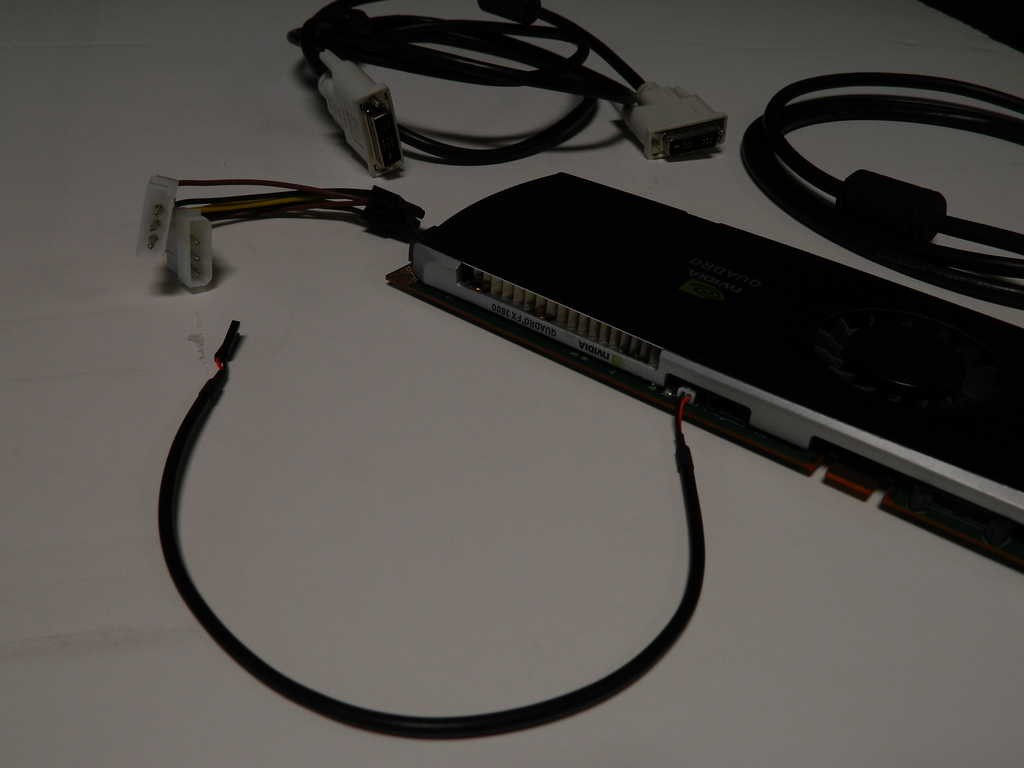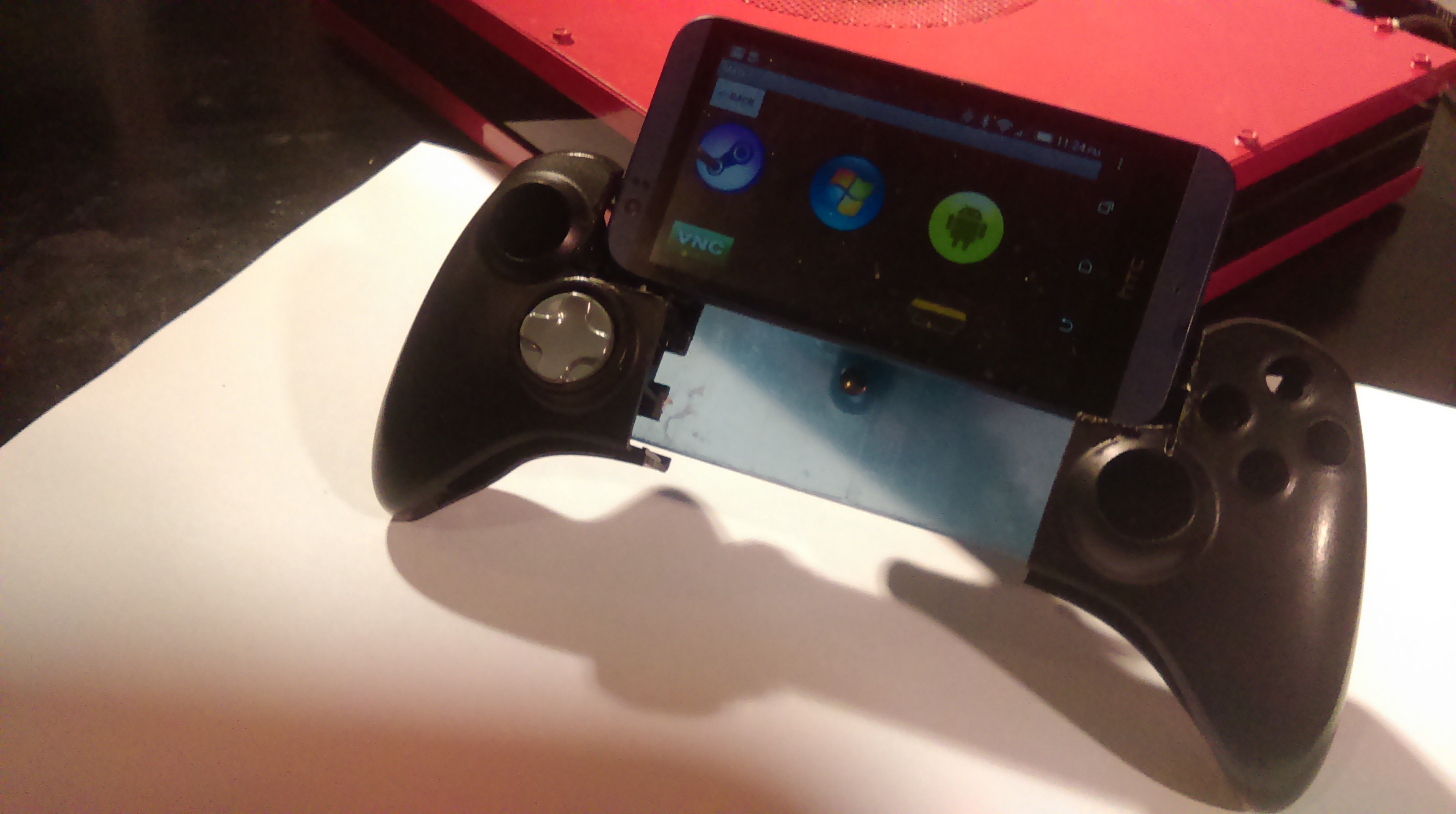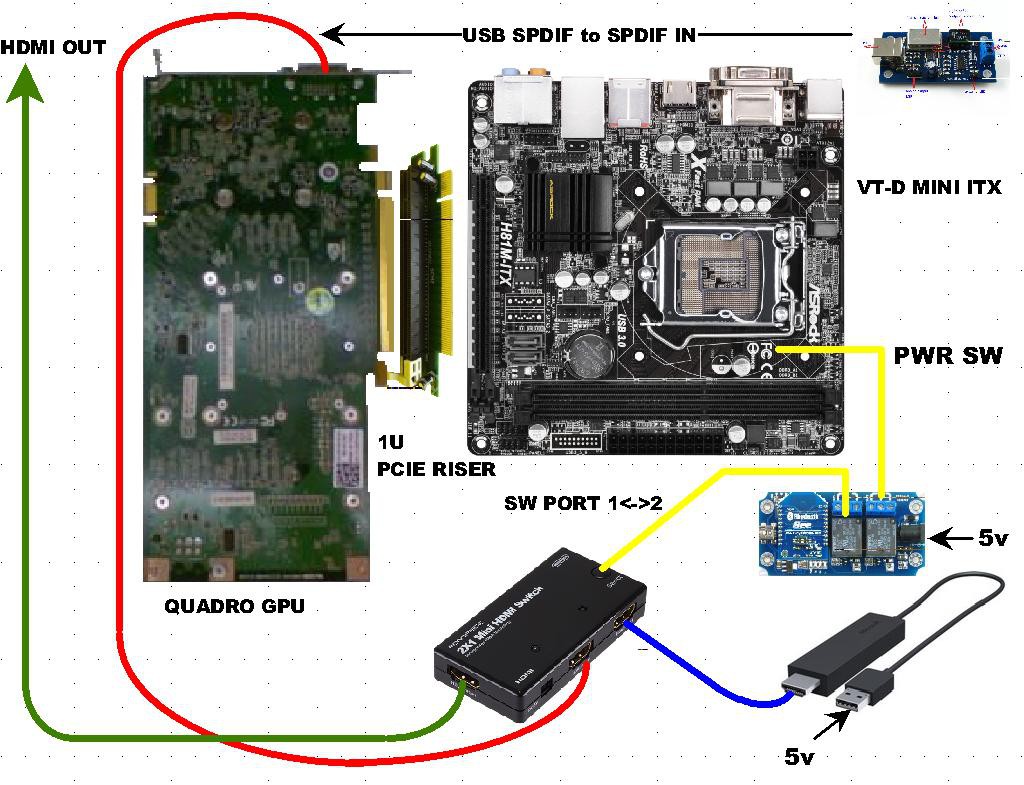-
There was a Quadro 2000 on CL so.....
08/03/2015 at 20:00 • 1 commentI jumped on it. The nice Guy had the 2000, an FX-1800 & FX-580, gave me all 3 for $50.
The Quadro 2000 happens to have audio, so I ditched the FX-3800 and the USB-SPDIF complicated hokey workaround.
It works flawlessly in the Win7 VM. All I had to do was DL the drivers and it's done. Say what you want about M$, but probably more hardware works EASILY there than anywhere else.
Screen up on Android & SteamOS, they both see the audio device but no sound........
I'm in Alsa & Pulsaudio hell, & crashing my browser from too many tabs open trying to fix this.
But I think it's still better... .Also, with the FX-3800, the only way I could run the Android VM was by rebooting the Host. I don't know why ( I have my suspicions) but it has to be the first VM booted after stealing the GPU from the Host. Win7 & SteamOS run anytime.
With the Quadro 2000, the Android VM can be first, or it can run after Win7 or after SteamOS. I can't reboot it, I would have to run Win7 or SteamOS first. Not Ideal, but certainly better. Better enough to fight with Alsa & Pulsaudio.....
Little bonus is the 2000 has no extra power connector & is a shorter card. Seems to perform in Wolfenstein about the same. I suppose the system should be designed to accommodate a long card that needs power, so I don't really gain much here.
Also, now the Oculus Rift works on it.
-
Received the PCM2704 USB to S/PDIF from China
05/26/2015 at 14:48 • 0 commentsI wish there was a USA source......
Connected as per the revised internal wiring diagram above. USB --> passed thru USB , S/PDIF to S/PDIF in on the FX3800 like this:
Removed the DVI cable --> HDMI I had been using & switched to a Display Port to HDMI.
I now have SOUND delivered over HDMI in the STEAMOS and Win7 VM's. It's however not straightforward in Android, so I'm working on that.....
-
Did some controller Development
04/13/2015 at 20:19 • 0 commentsMy Son Gregory is kind of in charge of the Controller Ergonomic design. He was here this weekend, so between that and the mouse pointer Hacklet we were inspired to some brainstorming. We long ago decided a Trackball is a MUST, and the GameCube controller seems to be the one the consensus prefers. We don't have one of those laying around, but we had a broken Xbox controller we could butcher up, just to see how it feels in your hand. The big hole on the right would presumably have a Trackball instead of what M$ currently provides.
This is our prototype butcher job:
So imagine something similar to a GameCube Controller spread out as this is. The spot below the phone could hold the buttons that were removed to accommodate the phone. It seems to feel OK, & the similar to GameCube Controller would seem to have more room.
The Mouse Pointer Hacklet also inspired us, first of all to add mouse & keyboard tags like we should have originally.
This project mentioned in the Hacklet interested me:
Since he has the Arduino identified as a HID device.
The Arduino in our Game Console only controls relays at present, and only gets power from the USB connection. The way way we currently provide the Mouse & Keyboard is with the VNC server built into the Hypervisor, since it's available to ALL VM's and even works upon boot so BIOS control is possible. As I have noted someplace above, I would have liked to use a Bluetooth HID but the ability to do this depends on the stack present in the phone. But now I have the idea to have the Arduino behave as a HID, and send the scan codes over bluetooth from the phone. The libraries also include Joystick, audio in & out, & lots more, so it looks promising that all the functions present on the phone could be passed this way.
This is most likely a "future development" aspect of the project, since we presently have a working, if not optimal, solution. I suppose a spare Arduino for testing may be in order.
-
Building a custom DisplayPort -> HDMI cable
04/07/2015 at 18:47 • 0 commentsGoing form this (male) looking at the cable
To this (male) looking at the device
Using this KEY:
I've got the DP cable peeled apart & identified the wires to the pins, with the plastic off it will bend around ( needs to be U shaped) to the HDMI switch and fit in the case. Also found an HDMI cable to sacrifice, & identified the pins. Had to make a needle meter probe for this, & use the USB microscope.
-
Featured on TinkerTry IT@Home Blog
04/06/2015 at 00:37 • 0 commentsSome of the Hydra was conceived on my own, but much of it is a conglomeration from MANY sources. I read every post on the VMDirectpath and ATI-Radeon thread on the VMware community. The ESX-Customizer came from here: VMware Front Experience
The VIB driver for the RTL8111 came from TinkerTry Paul Braren's IT@Home Blog. I would have to guess I mined some other jewels from there, since he covers quite a bit of the fundamentals I have employed here. WAY back in my bookmarks I'm sure.....
Anyway, now I realize that Hackaday may be the place I go every morning for my coffee reading material, but that's not true for everyone. So I have been spreading the word on Google+ and Facebook and anywhere else I can think of. Virtualization Blogs apparently are run by guys that know what I am talking about. Paul read my post and recognized his VIB driver for the RTL8111, and was surprisingly impressed enough to feature The Hydra on his Blog. I am impressed as well, Blogging is turning out to be more work than I thought........
So check it out, there's lots of content there besides virtualization, product reviews, best practices & lots of instructional videos. Right Here:
-
Couple of threads on Valve site
04/05/2015 at 23:35 • 0 commentsHere are some of the questions addressed by the Hydra design. This is what I use to determine the features I want to incorporate, and the issues that need solving.
Integration with Android Device
"Its not a must be, but for the gaming purposes could be nice if Steam OS will have some integration with Android devices."
"So, I might get an Alienware Steam Machine and use it as a game console. However, instead of always using a controller, can I also use a keybiard and mouse? This is because I want to play some games with those controls, like Garry's Mod and Surgeon Simulator 2013."
"TL;DR? If the thought of getting one or more gaming systems out of hardware you might already own isn't interesting to you; don't read this.
For a very long time, I was trying to work out a way to unlock more use out of my system. The basic idea was to use Xen and at least 2 video cards in either SLI or dual-system mode. The difficult part was passing acceptable performance through more than one video card. Until I found this: "
http://www.pugetsystems.com/labs/articles/Multi-headed-VMWare-Gaming-Setup-564/"Can i use a Steam machine like a normal Computer with windows?"
-
VMware Licensing
04/04/2015 at 01:07 • 0 commentsJust to clarify - we are using the FREE version of VMware's VSphere Hypervisor.
When I first discovered this feature, I called VMware to nail this question down for myself. I suggested a $99 version that included access to the API's only. No Vmotion, Vcenter etc.
They didn't see the value.
You can do what I'm doing with the free version, without the API's. Either method works, and the better or easier way really depends on what you are used to or comfortable with.
You can do ANYTHING over SSH, so I am using that.
BUT, to get the FREE version, you need to create an account. then DL the ISO and you have access to the FREE version KEY.
I assumed they would want at LEAST all the emails so they could send out promo's, etc
So I engineered this whole convoluted process where an end user would receive his/her Hydra, boot from a live cd, sign up and DL the ISO, get the KEY in email, and install to a virtual machine using the SSD as a physical disk. Then remove the CD and reboot to ESXi.
I forget what the exact roadblock was, maybe I thought the windows live cd would get me in trouble. So I called VMware again and after getting passed around a little I was able to ask them directly how to proceed.
"just install the FREE version and apply the KEY, the KEY is the same for all FREE installs. "
OK then.
-
Changed System Board
04/02/2015 at 18:39 • 2 commentsSo, as I am writing the build instructions, I get to where you are installing ESXi.
On my testing prototype system, the GB Lan is a Realtek 8111 - for which there is no driver in ESXi and the install FAILS.
I used the ESX-Customizer (which I will link to in the build instructions) to inject the RTL8111 driver (a VIB file I will also link there) into the VSpere install ISO.
However, the H81M-ITX specified has an Atheros 8171, for which there is NO VIB file to inject. Until I get one in my hands, I can't really say if it will work or not.
The H81M-ITX/Wifi , while a little more expensive, has an RTL8111, so I can say for sure it will work.
Plus it has a potentially available PCIE 1x available for some pass through device, maybe we can replace the USB-->SPDIF, or add a second display (limited to 1x)
-
Updated Internal Wiring
03/28/2015 at 20:44 • 0 commentsChanged the USB sound card to a USB sound card with SPDIF. The FX3800 does not have it's own sound device like a Radeon. It has audio passthrough. It has an SPDIF connector & what looks like an audio connector similar to those found on a cdrom, but this connector does not accept audio in like the SPDIF, it's for something else.
I am currently using the DVI connector from the GPU --> HDMI in on the switch. I a working on dressing the cables, and my research indicates the best way to get audio out of this box is from the USB SPDIF --> spdif in on the Quadro ---> Display port out ---> HDMI in on the switch.
To enable passthrough of the GPU, the onboard graphics, deep render, deep render standby, & onboard HDAUDIO must be disabled. Therefore to have sound from the various VM's, we need some other sound device that can be passed through to the VM. SInce all USB's are passed through, we can use a usb sound card with SPDIF.. The other option would be:
1) more expensive Nvidia GPU with sound, which is certainly possible for some builds.
2) Radeon GPU with sound, but nearly impossible to get Android up on
3) Mini ITX board with additional mini PCIE, like the WiFi version of the spec board. Then a mini-pcie sound card with SPDIF. - IF the board supports a not WiFi card in this slot.
The USB->SPDIF is $14, so this is the solution for now.....We'll have to see what it sounds like.....
-
Invited to be an Exhibitor at TheGameCon2015
03/26/2015 at 20:57 • 0 commentsWorking on the arrangements to make this happen. This would be the ideal place to show the system and interface with actual end users. I already follow the SteamUniverse discussion boards to best address the concerns and questions that arise there, but nothing beats the feedback form an actual Gamer using the system.
The event fortuitously takes place on August 7-9, so my 3 prototypes will be put through the wringer there before being shipped off to Hackaday (or specifically Supplyframe) by the 17th.
Check out http://thegamecon.com. Even better, if you can be in Galveston on Aug 8-9 come and play some games.....
Hydra Multi OS Gaming Console & Controller
This is a game console sized Hydra with a single GPU, running SteamOS, Win7 & Android x86 KitKat. Gameplay & mgmt via modular controller
 eric
eric


